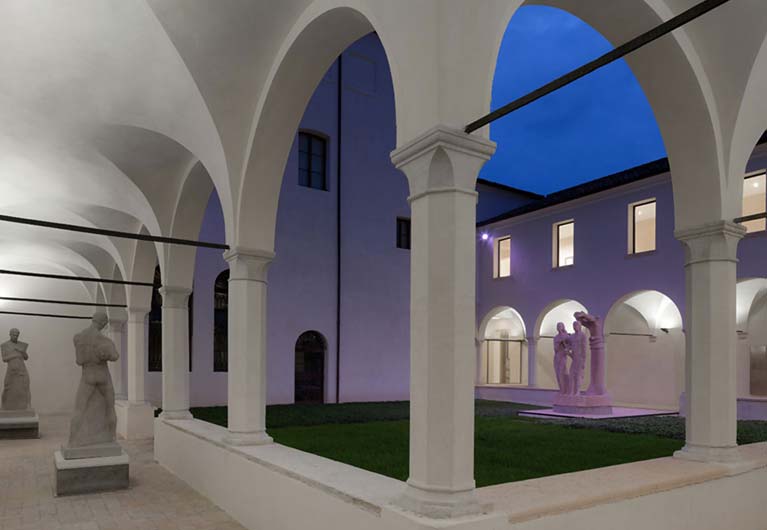Luigi Bailo Museum
The “Luigi Bailo” Museum
The Museum bears the name of its founder, Abbot Luigi Bailo: scholar, writer, professor, art and history enthusiast... who left an indelible mark on the cultural life of Treviso.
But what is the history of the Museum? Today, the Bailo Museum is known because it preserves many important works of art created in the 19th and 20th centuries.
Its structure is modern: in 2015 and, more recently, in 2022, a major restoration renovated the facade and interior, giving the Museum its current appearance.
Yet as you walk through the spaces on the ground floor, you will notice that there are two large courtyards around which the museum's rooms and corridors are distributed. These are two cloisters, that is, courtyards surrounded by a portico that were located inside religious convents-this building has medieval origins!
Long ago, in fact, the Museum was a convent run by the Jesuit Fathers of St. Jerome; in the second half of the 17th century it was administered by the Jesuits, then by the Somaschi Fathers, and finally by the Discalced Carmelites, who remained there until 1866.
In that year the building became the property of the Municipality of Treviso. The Library was moved here and the Museo Trivigiano was founded by Abbot Luigi Bailo: a collection of Roman tombstones, torn frescoes, ceramics, paintings and sculptures, assembled by the abbot over the years and opened to the public in 1888.
Under the direction of Luigi Coletti, in the 1930s, the Trivigiano Museum was joined by the valuable collection of the Municipal Picture Gallery, established in 1851, with works created between the 15th and 19th centuries.
The union of the two collections is extraordinary, but the works are many and the museum spaces are no longer sufficient!
Thanks to new renovations, it will be possible to move the “ancient” art to the rooms of the former St. Catherine's Convent, not far from here, leaving the “modern” art in the Museum you are now about to visit.
